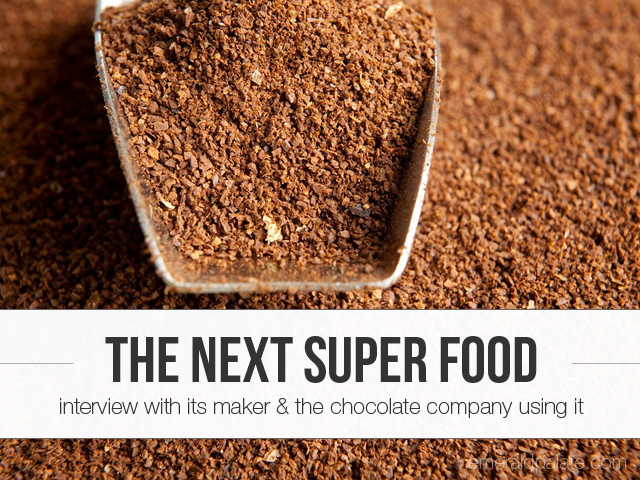
Billions of coffee beans make it into our cups each year. Coffee is the second most valuable commodity only behind petroleum, and the industry employs more than 25 million people worldwide.
With any industry that touches so many people, it’s impossible to reap benefits without also being exposed to disadvantages. It’s no secret that many coffee farmers and workers around the world are exposed to terrible working conditions and unfair pay. The Fair Trade movement made great progress in shedding light on the injustices so many people in the coffee industry face. But there’s another disastrous byproduct of the industry that most people aren’t talking about…until now.
Coffee beans grow in fruit pods up in trees. They’re removed from their pods and sold so we can make our daily cup of ‘jo, but the pods are discarded. This leaves 1.5 million cubic feet of waste, which usually ends up in streams.
Luckily, someone right here in Washington identified this economic and ecological problem and came up with a solution: turn it into the world’s next super food and revolutionize not only the coffee farming industry, but also the nutrition of people in developing countries.
I was fortunate enough to sit down with the founder of the company that’s taking the coffee industry by storm and the chocolate company he’s working with to make this super food the next household staple.
CoffeeFlour: The Next Super Food & the Chocolate Company Using It
If You’re Into Chocolate & Super Foods, Listen Up
CoffeeFlour is the name of the company that’s putting discarded coffee fruit to good use. It’s repurposing it into — you guessed it — flour. But founder Dan Belliveau realized he couldn’t just throw coffee flour on the shelf and expect it to stick. Rather, he needed to demonstrate how it is applicable to our everyday lives.
That’s where Jason Wilson and jcoco Chocolate come in. Belliveau brought on Jason Wilson, chef of the late Crush restaurant in Seattle, as CoffeeFlour’s Executive Chef. His mission? To find uses for CoffeeFlour in recipes. He now heads up the company’s research and product development.
Belliveau also approached Jean Thompson, the CEO of jcoco Chocolate, with an idea to put CoffeeFlour into chocolate. He reasoned it’s not enough to test how CoffeeFlour can be used in cooking and baking. He needed to get it in stores and on people’s plates in a familiar vessel.
Since chocolate and coffee are a natural pairing, the CoffeeFlour and jcoco Chocolate partnership blossomed. I sat down with Belliveau, Wilson, and Thompson to learn more about CoffeeFlour, their partnership, and how the byproduct of coffee farming is the world’s next big super food.
Interview with CoffeeFlour & jcoco Chocolate
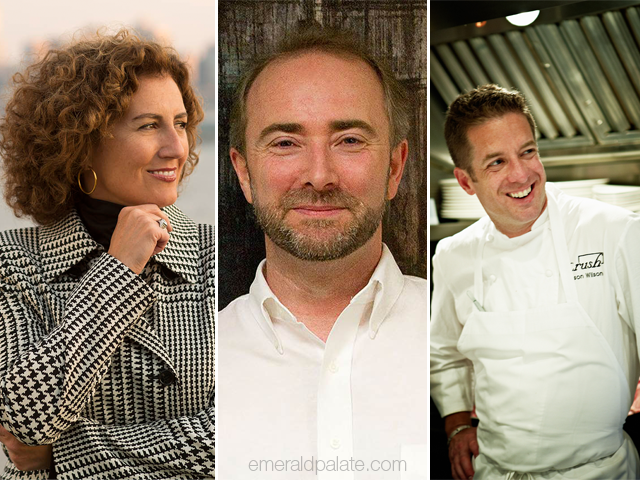
So, what is CoffeeFlour?
Belliveau: Every year billions of pounds of coffee cherry fruit, a by-product of green coffee production, are discarded or, to a lesser degree, composted into fertilizer. Rather than leave these cherries to rot in heaps or be dumped into rivers, CoffeeFlour uses a proprietary method to convert the cherry pulp into a nutrient-dense ingredient that can be used for baking, cooking, mixing drinks, and crafting chocolate. This is how CoffeeFlour is made.
The result is an incredibly nutritious and distinctly flavorful cooking ingredient, with more fiber per gram than whole grain wheat flour, more protein per gram than fresh kale, more potassium per gram than a banana, and more iron per gram than fresh spinach.
CoffeeFlour makes the most of a food source that we already have and are not using to its fullest potential.
How did you come up with the idea for CoffeeFlour?
Belliveau: I’ve spent my career working in food production at Frito-Lay, Starbucks, and in the wine industry. I used to deal with by-products on a daily basis. The amount of waste produced in the food and beverage industry is staggering.
I came up with the idea for CoffeeFlour in 2012. The goal was to find a creative, valuable, and nutritious use for the waste generated by green coffee production.
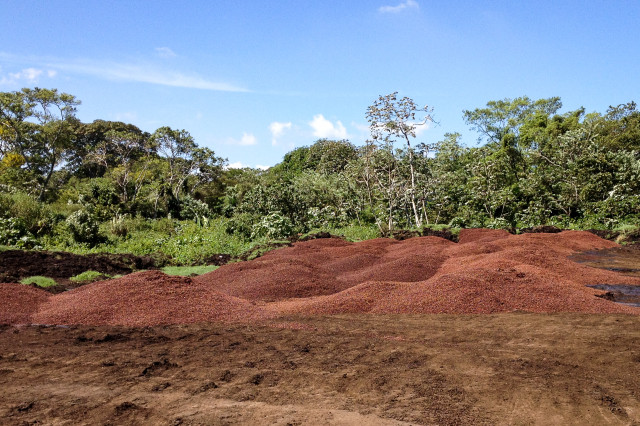
You say CoffeeFlour is the “global impact food.” Why?
Belliveau: On the environmental side, CoffeeFlour significantly reduces the amount of decomposing waste that is generated in the de-pulping process. Though some of the compost can be used as a partial fertilizer, the piles of waste are generally dealt with after harvest. By that time, it’s generally toxic and has a negative effect on the landscape and nearby streams, rivers, and water sources.
On the economic side, CoffeeFlour creates a year-round, supplemental income for many farmers and mill workers (for no extra work) — turning what was once waste into revenue.
CoffeeFlour can also have a positive benefit as it is introduced into the local food supply. We’re trying to keep 30 – 50% of CoffeeFlour in its place of origin in order to provide the local community with a more affordable food source. Commodities like corn and wheat are not generally grown in the same area as coffee, so these goods are expensive in our farmers’ communities. We’re hoping to make CoffeeFlour an affordable and more nutritious alternative, which can have a huge impact on these regions’ local food systems and its peoples’ well being.
I never would’ve thought I would be drinking kale juice five years ago, but it’s everywhere now. I have no doubt CoffeeFlour will gain the same visibility.” – Jason Wilson, Executive Chef of CoffeeFlour
How did the jcoco/CoffeeFlour relationship come about?
Belliveau: I met with Jean Thompson a little over a year ago to pitch her the idea of working with CoffeeFlour. I had an hour-long presentation ready, but Jean immediately understood our mission and we decided to move forward with a partnership on slide three!
The partnership is completely natural, as Seattle Chocolates shares our philosophy to give back and source responsibly – this is evident in their products.
(editor’s note: jcoco donates a serving of fresh, healthy food for every jcoco product that’s sold to food banks.)
Thompson: A mutual friend of mine and Dan’s connected us. Dan was talking about wanting to put CoffeeFlour into different products and mentioned chocolate. I came to our meeting more as a courtesy to our friend, but as soon as I heard the story I was blown away by the potential of the product.
I can’t stand waste — like no one can drink out of plastic water bottles in my presence — so he hit a cord with me. Something is sitting in and polluting rivers and there’s people [the farmers] who don’t have the money to do anything about it. But Dan came up with a solution.
I love how it’s a super food that can improve the financial and nutritional lives of people who need it. Chocolate can reach a lot of people in a small way — it doesn’t take a lot to hit a lot of people. So this partnership was a no-brainer for me.
How did you get CoffeeFlour into jcoco’s chocolates?
Thompson: We went through a pretty rigorous R&D process before we landed on our final product, the Arabica Cherry chocolate bar. Because CoffeeFlour is high in fiber, it can be difficult to work with. It’s very astringent and dry, so it absorbs fats from cocoa butter. It took us many months of R&D and shelf testing to see how it would do. Sometimes we found it got drier when on the shelf, so we had to start over.
To give you an idea of our process, we ended up testing batches using CoffeeFlour from three countries: Nicaragua, Vietnam, and Guatemala. Our first test was with the Nicaraguan CoffeeFlour. We found the end product a bit too sweet with a powdery finish.
Next we tried the Vietnamese CoffeeFlour. This chocolate bar ended up being saltier, almost as if it had soy sauce in it. The flavor had much more umami than we thought people would enjoy.
We ended up using the Guatemalan CoffeeFlour in our chocolate bar. It resulted in a much more caramel-y product. We named it arabica cherry because that’s what the red berry around the coffee seed is called. Unfortunately this causes people to think it will taste like cherry, but we wanted to be as factual as possible in order to spread not just awareness but the right awareness.
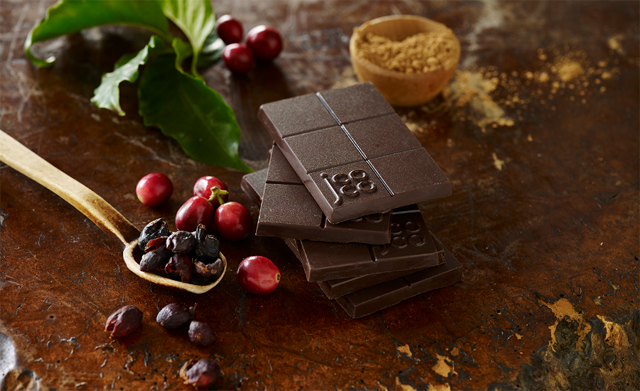
How much CoffeeFlour is in each bar? How does it affect the nutritional information vs. your other bars?
We use about same amount of CoffeeFlour as we do any other ingredients. It comes out to about 1⅓ gram of CoffeeFlour and half that amount of espresso. We use 60% dark chocolate in this bar, but because CoffeeFlour adds fiber, protein, and antioxidants it reads more like a 75% dark bar in terms of nutrients.
We don’t tend to sell anything in the 85-90% cocoa range because we find it too dry and not palatable for anything but baking. So we like that people are getting the health benefits they’d get when eating darker chocolate but without the change in taste.
What do you think the biggest challenge will be to raise awareness and a taste for CoffeeFlour?
Belliveau: CoffeeFlour is an incredibly versatile ingredient. Surprisingly, it doesn’t taste like coffee, but rather expresses more floral, citrus, and roasted fruit-type notes. Our biggest challenge will continue to be to educate consumers on how versatile CoffeeFlour really is! Not only does it work beautifully in baked goods, chocolates, and pastries, but it also can be used to craft tortillas, pastas, spices, rubs, cocktails, you name it!
Wilson: I never would’ve thought I would be drinking kale juice five years ago, but it’s everywhere now. I have no doubt CoffeeFlour will gain the same visibility. Especially because the list of ingredients CoffeeFlour pairs well with is very long. Dried and roasted nuts, fruits, molasses, brown butter, ice cream, cheeses, and vinegars are some of my favorites.
Unfortunately we don’t have a book about this. We’re writing the book.” – Dan Belliveau, founder of CoffeeFlour
Thompson: I agree, our biggest challenge is awareness. It’s not a quick read. Dan came up with coffee “flour” because it sounds like wheat-based flour that you’d use in everyday cooking, but we have a long way to go to teach people how to appropriately use it so everything they make comes out delicious.
Belliveau: Yeah, unfortunately we don’t have a book about this. We’re writing the book.
Is CoffeeFlour available to the public?
Belliveau: Yes! Besides in jcoco’s arabica cherry chocolate bar, CoffeeFlour is now available to consumers via Marx Pantry.
How should home cooks use CoffeeFlour?
Wilson: Home cooks will find CoffeeFlour easy to substitute for baking. You can substitute it like you would whole wheat or buckwheat flours. Just don’t completely eliminate all-purpose flour and other rising agents. Since CoffeeFlour is high in fiber, it retains moisture. This makes your baked goods moist, but it doesn’t help it rise.
In terms of taste, CoffeeFlour is earthy, fruity, and spicy…very aromatic like roasted cherries. And what I particularly love about it is that it can be a great gluten-free additive to recipes. And because of its high fiber content, CoffeeFlour can benefit those looking to increase fiber in their diet.
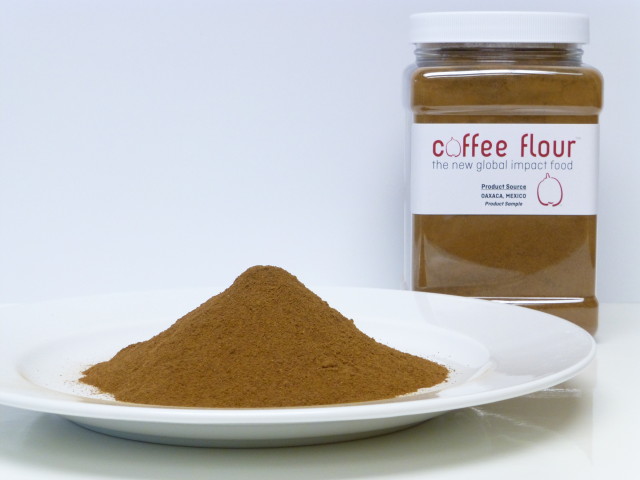
What’s the nutritional benefits of CoffeeFlour? Why is it the next super food?
Belliveau: CoffeeFlour is about as “super food” as it gets. One tablespoon of CoffeeFlour has only 34 calories, 0.05 grams of fat, and barely any sodium or sugar. In terms of nutritional value, that tablespoon has almost 5 grams of fiber, 1.5 grams of protein, 13% iron, and 4% calcium. Plus CoffeeFlour is gluten free, vegan, and kosher. It uses no GMOs. It basically fits into every person’s diet, no matter what they’re looking for.
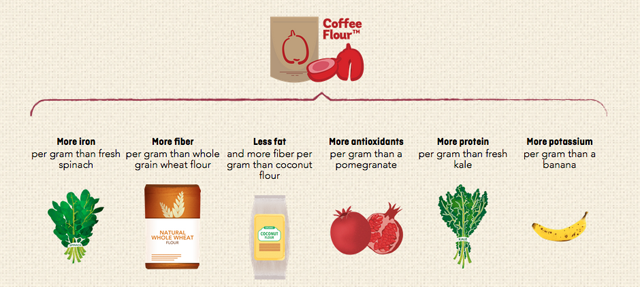
What’s next for CoffeeFlour?
Belliveau: We’re looking forward to announcing several new culinary partnerships across the world. Since our partnership with jcoco, we’ve worked with Bagel & Bagel in Japan (the country’s largest bagel company), Dominique Hansel (creator of the cronut), Dan Barber, and The Brooklyn Roasting Company.
[line]
Want to learn more about CoffeeFlour and jcoco Chocolates? You can purchase CoffeeFlour and jcoco’s arabica cherry espresso chocolate bar to try it for yourself. Or follow CoffeeFlour for recipes and food photos from the lab.
Disclaimer: This article is based off my own opinions. While I was invited to a food pairing featuring jcoco chocolates and coffee flour, I was not asked to write an article. This interview was entirely my idea, as I think more people need to know about coffee flour!


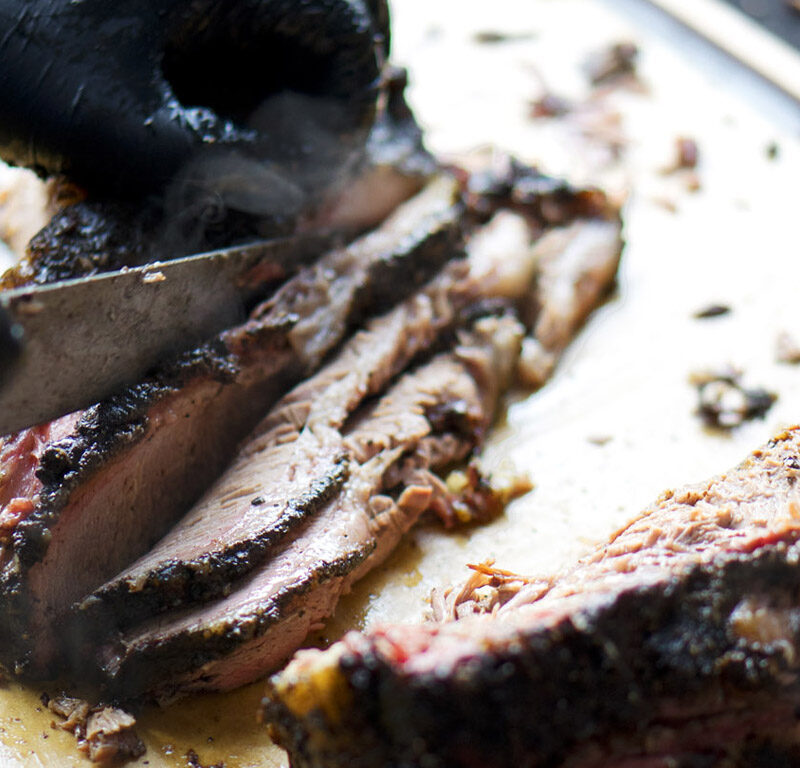
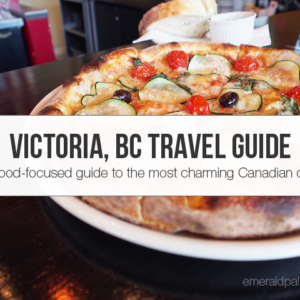
Wow, this is pretty cool! Will have to check out both the chocolate and the flour 🙂
I hope you enjoy it!
This sounds AMAZING! Thanks so much for sharing! <3 I'm going to have to dig into coffee flour a little more! <3
Let me know how you like it if you decide to use it!
Wow, this looks like such a cool ingredient! I would love to see some example recipes soon!
My thinking exactly, Hannah! I’ve got something up my sleeve. 🙂
This is so cool! I am definitely curious about using coffeeflour for baking – it sounds like it would perform similar to coconut flour from the description above. I definitely want to check it out.
I highly encourage you to try it and let me know how it turns out! It’s only available at Marx Food right now. And I’m not too familiar with coconut flour, but Jason Wilson mentioned it’s similar to buckwheat flower. Since it’s higher in protein it won’t help your baked goods rise, so he recommended only subbing in some for all purpose flour. Good luck!
This is GENIUS!!!! Thanks for sharing! I’m looking further into the company!
Woo your welcome! Thanks for checking it out!